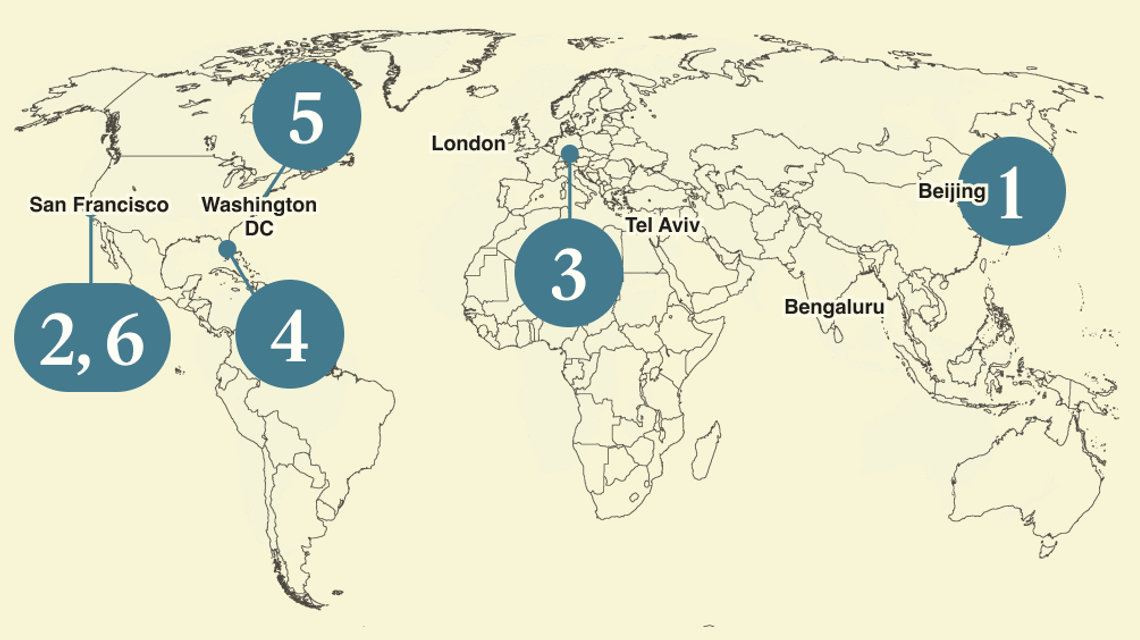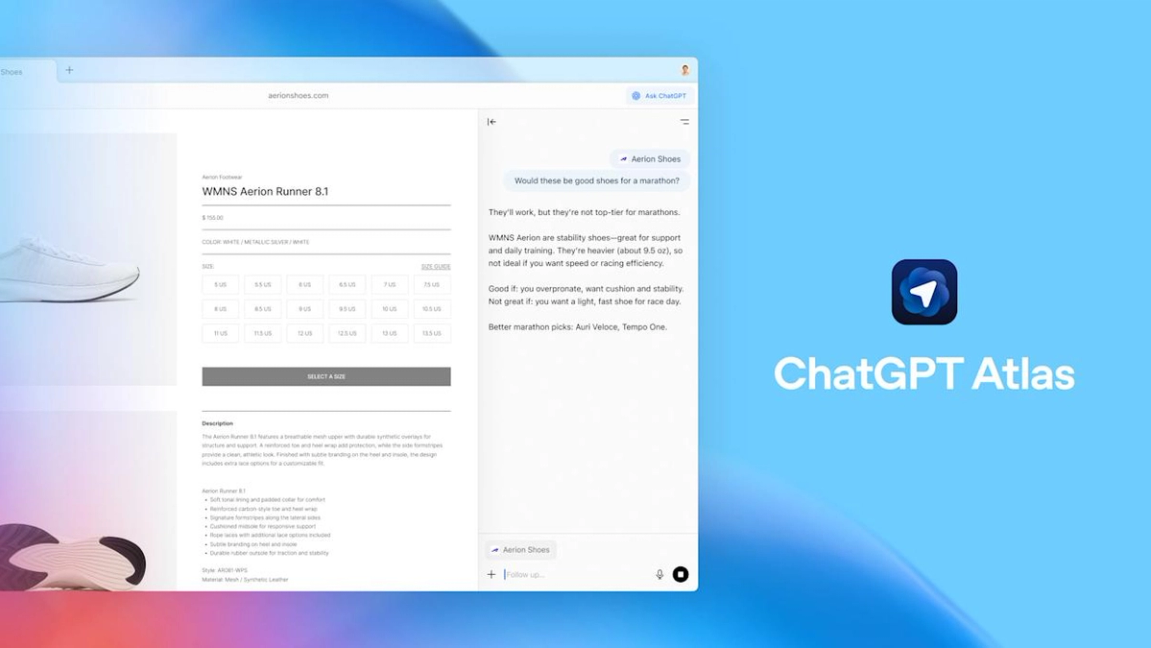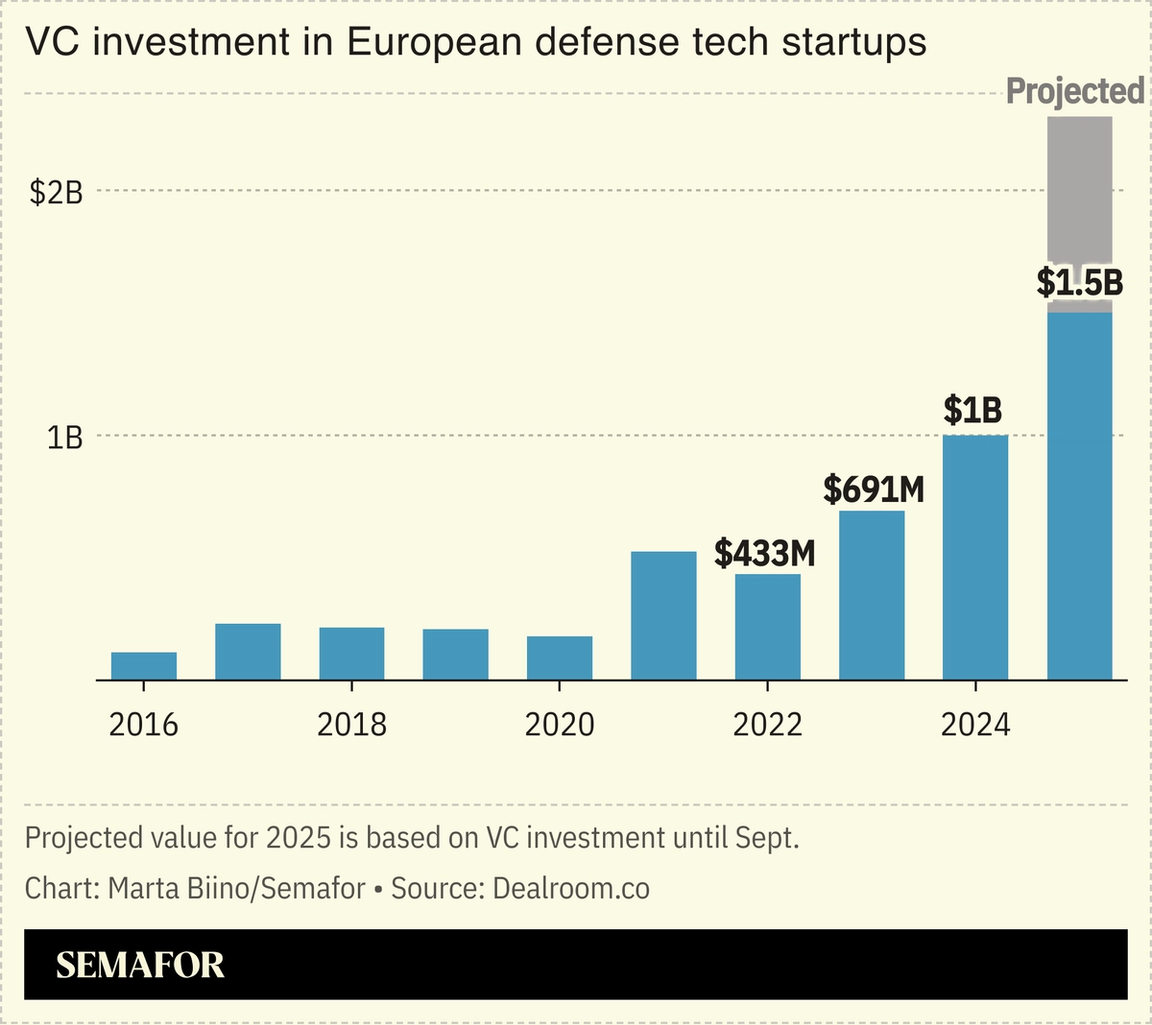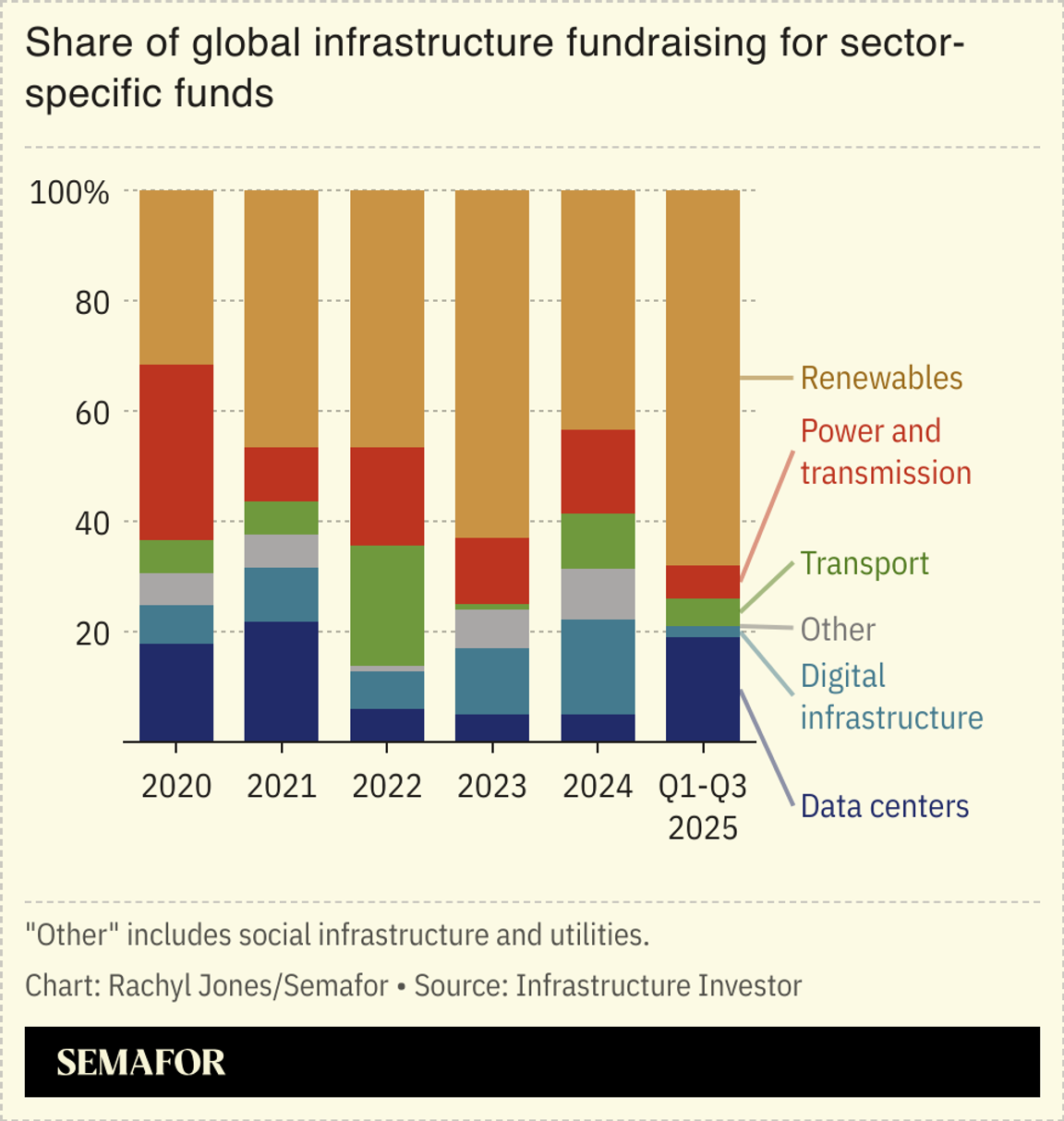| | In this edition, OpenAI faces browser challenges by joining the race, and a look back at Semafor Tec͏ ͏ ͏ ͏ ͏ ͏ |
| |  | Technology |  |
| |
|
 - China vs. US chipmakers
- OpenAI joins browser battle
- Europe’s defense warning
- Investor not sold on data centers
- Paying for AI
- Google goes quantum, again
 Celebrating Semafor’s third anniversary, and how machine learning is helping scientists identify animals on Antarctica’s seafloor. |
|
 In 2022, we did something kind of crazy: We launched a news company in the middle of an economic downturn and a reshuffling of the attention economy. We started with the profound sense that we, like you, were overwhelmed by low-quality news, and simultaneously aware of multiple agendas concealed in articles, or dialed up to 11 to mine fear and rage. We have tried to respond with deep, concise products, and with a form of journalism that lets me wear my own analysis on my sleeve — but always leaves room for disagreement. We launched just a month before the “ChatGPT moment” that would define not just Silicon Valley but the global economy. Amid the chaos, we brought you scoops from Microsoft’s $10 billion investment in OpenAI to the inside story of the rift between Elon Musk and Sam Altman to the release of GPT-4 and the unfathomable number of parameters powering the world’s largest computer program. We’ve also cautioned against the hysteria. If you believed a lot of the legacy media, we would all have lost our jobs by now, or been annihilated by a superintelligent villain. Instead, we wrote about how OpenAI was hiring an army of software engineers around the world to train a coding model that, today, accounts for the majority of the revenue from its products. And when most of the media was laughing at Elon Musk’s attempts to build xAI, we told you he was, in a lot of ways, pulling ahead. In less than a year, the company shocked the industry by reaching the top of the AI benchmarks. Despite the tough environment, Semafor has reached escape velocity, largely thanks to readers like you. Thank you for supporting this mission for the last three years — and here’s to the next three. |
|
 A Texas Instuments chip. Valentyn Ogirenko/Reuters. A Texas Instuments chip. Valentyn Ogirenko/Reuters.As Washington and Beijing struggle to come to a trade truce, China is stepping up its probes of US chip companies. A Commerce Ministry unit published a questionnaire on Wednesday that asks companies like Texas Instruments about their Chinese customers, sales volumes, warehouse expenses, and other sensitive information, Bloomberg reported. It shows how broadly the semiconductor industry is being affected by tensions between the two countries, going beyond the most advanced AI chips. Meanwhile, the tech boom in China is continuing to bolster public market prospects for startups there. Chipmaker Yangtze Memory Technologies Co. is considering an IPO at a valuation that could surpass $40 billion, in what would be one of the country’s largest in recent years, Bloomberg reported. Also, Humanoid robot maker Leju Robotics raised more than $200 million in a new funding round ahead of its planned IPO. The investment will go towards scaling production, in a sign of sustained interest in Chinese tech. |
|
OpenAI jumps in browser race |
| |  | Reed Albergotti |
| |
 Courtesy of OpenAI Courtesy of OpenAIOpenAI launched a web browser yesterday and my biggest takeaway was how rapidly powerful the OpenAI brand has become. While we’ve known for some time that OpenAI was working on the product, it’s very late to the game. Still, because of the company’s massive consumer following, it has as good of a chance as any company (maybe even Google!) to win the AI browser battle. AI-enabled browsers are in their infancy, and have a long way to go to become ubiquitous for internet users. They also suffer from some pretty significant security issues that need to be ironed out. One phenomenon I noticed while using Perplexity’s Comet browser over the summer is what I call the “bad website paradox.” AI browsers work best on well-designed websites. But they’re more so put the test on the very long tail of horrible websites. For instance, the Comet browser still gets completely stumped on the website Semafor uses for expenses and travel. The promise of the AI-powered web browser is a tantalizing one: Imagine every annoying thing you do on the web is done for you. And it kind of works! I’ve seen the Comet browser do some incredible stuff. But on the most complex tasks, some little thing always goes wrong. In the end, it hasn’t really replaced any of the annoying time sucking daily tasks. OpenAI’s latest announcement might be one workaround. Creators of websites can implement accessibility features that could help aid the AI models powering the browser. But then, it’s probably still the best websites that will take OpenAI’s advice. |
|
German defense tech co-CEO calls ‘bubble’ |
No, not that bubble. Torsten Reil, co-CEO of Germany-based military software firm Helsing, warned of a defense tech bubble in Europe, estimating 80% of such companies “won’t make it,” while speaking at Bloomberg’s tech conference Tuesday. The continent has seen a massive influx of spending in the sector since Russia’s invasion of Ukraine in 2022, creating a business ecosystem ripe for startups.  European defense tech companies are expected to receive $2.3 billion in venture capital funds this year, up from $525 million in 2021, prior to the war, according to Dealroom. Helsing has benefited from the environment, raising €1.3 billion in that time ($1.5 billion), including €600 million in June. Others have sung a different tune on the likelihood of the sector’s success, pointing to decades of underinvestment and a global game of catch-up. Procurement timelines have shortened and nations continue to increase their budgets. The landscape will test whether the industry can outlast Europe’s more pressing geopolitical concerns, potentially making the region a hotbed for new defense technologies as it lags behind the US in AI. |
|
Investor ‘politely’ declines funding data centers |
 Sadek Wahbha at a 2024 Semafor event. Kris Tripplaar/Semafor. Sadek Wahbha at a 2024 Semafor event. Kris Tripplaar/Semafor.One of the world’s biggest infrastructure investors has sat out the AI data center boom — and thinks those diving in may end up regretting it. I Squared Capital isn’t squeamish: It has backed Indian toll roads, Malaysian solar farms, and refrigerated warehouses in the Philippines. But the current rush into AI infrastructure — on the promise that Microsoft, Google, or other hyperscalers are rock-solid offtakers — is too rich for CEO Sadek Wahba’s blood. “The usage is still unproven. Are these AI models going to be profitable? I don’t know,” Wahba, whose firm manages $50 billion, said in an interview with Semafor’s Liz Hoffman. “When you start unpeeling the onion, it’s much more volatile and uncertain.” Data centers’ huge needs for power, water, and industrial components that are in short supply — anyone needing one of GE Vernova’s gas turbines will have to wait until 2028 — add to the risk, Wahba said. “I don’t have this sense of the input, which is the technology and how fast it’s going, and the output, which is … it may replace [millions of workers] or may in fact do absolutely nothing,” he said. “I politely decline.” |
|
Funding AI is evolving, Goldman report finds |
The price tag on AI infrastructure is forcing bankers to rethink how they’re financing it, according to a Goldman Sachs report published Wednesday. “If you look back at almost any transformative technology in history, the complexities and scale of each innovation required new financing methods to address those nuances,” the report said. “Today is no different.” Data center developers are starting to use “creative financing structures” to bring investment for different parts of the build under one umbrella, the report said — opening the door for long-term pools of capital like pension and insurance funds seeking more stable returns. “The market is evolving, and contracts are evolving in a way that makes some of these contracts a similar level of credit risk or equity risk to traditional investment-grade bonds,” Jason Tofsky, a tech and media managing director in the company’s investment banking division, told Semafor. Changing how contracts are written could “drastically expand” the number of potential financiers, the report said.  Goldman also expects hyperscalers to increasingly spend money outsourcing the building and maintenance of data centers to third parties like QTS, Digital Realty, and Equinix — despite operating their own data center businesses — because it helps them get online faster. The shifts mark how insatiable demand for new technologies requires entire businesses and financial systems to evolve with it. — Rachyl Jones |
|
Going quantum: Google researchers’ latest opus |
| |  | Reed Albergotti |
| |
 Google’s quantum-computing facility. Courtesy of Google Quantum AI. Google’s quantum-computing facility. Courtesy of Google Quantum AI.Google’s quantum computing division has helped push the field forward with several significant breakthroughs in recent years. Most of those have helped answer whether such computers are possible to build at scale. The group’s latest contribution, published in Nature on Wednesday, addresses another important question: How will we realistically use quantum computers once they actually exist? Researchers have shown how a quantum computer can be used to do nuclear magnetic resonance, a method of estimating the atomic structure of compounds. While this project, called Quantum Echoes, isn’t practically useful today — namely because the method used by Google’s researchers is still slower than typical computers — it could be a huge boon to science as the technology improves. Today, scientists are extremely excited about how AI can be used to predict the way molecules interact, transforming areas like drug discovery and materials science. One of the challenges, though, is that those AI models have limited high-quality data to train on. Large language models, by comparison, are great at predicting human speech because of all the different combinations of words, sentences, and paragraphs on the internet. Imagine, though, that all the books ingested by LLM training sets only contained the information on the dust jackets. That’s similar to where we are with science today. Still, Google has made enormous strides in AI-powered scientific discovery. Its AlphaFold protein prediction project upended the field of biotech. Google has launched its own drug discovery spinoff, Isomorphic Labs, in hopes of leveraging those discoveries for its own financial gain. Wednesday’s paper isn’t likely useful to Isomorphic today, but it brings into greater focus how the technological efforts across Google’s empire could one day come together for a huge gain, both scientifically and financially. |
|
 Trotter, Cameron, et al. ‘Automated Detection of Antarctic Benthic Organisms in High-Resolution In Situ Imagery to Aid Biodiversity Monitoring.’ Trotter, Cameron, et al. ‘Automated Detection of Antarctic Benthic Organisms in High-Resolution In Situ Imagery to Aid Biodiversity Monitoring.’Deep-sea learning. Scientists from UK-based research institute British Antarctic Survey are using AI to help identify animals living on the Antarctic seafloor, the organization announced this week. The image model, trained on labeled pictures of wildlife, allows scientists to identify species in seconds — a task that could take hours by hand, the group’s machine learning research scientist Cameron Trotter said. “The images we used to train the AI are extremely high-resolution and packed full of weird and unusually shaped animals, often living on top of each other, some of which have never been seen before,” he said. The findings could help policymakers decide which regions need special protection as climate change and human interference threaten the ecosystem. |
|
|